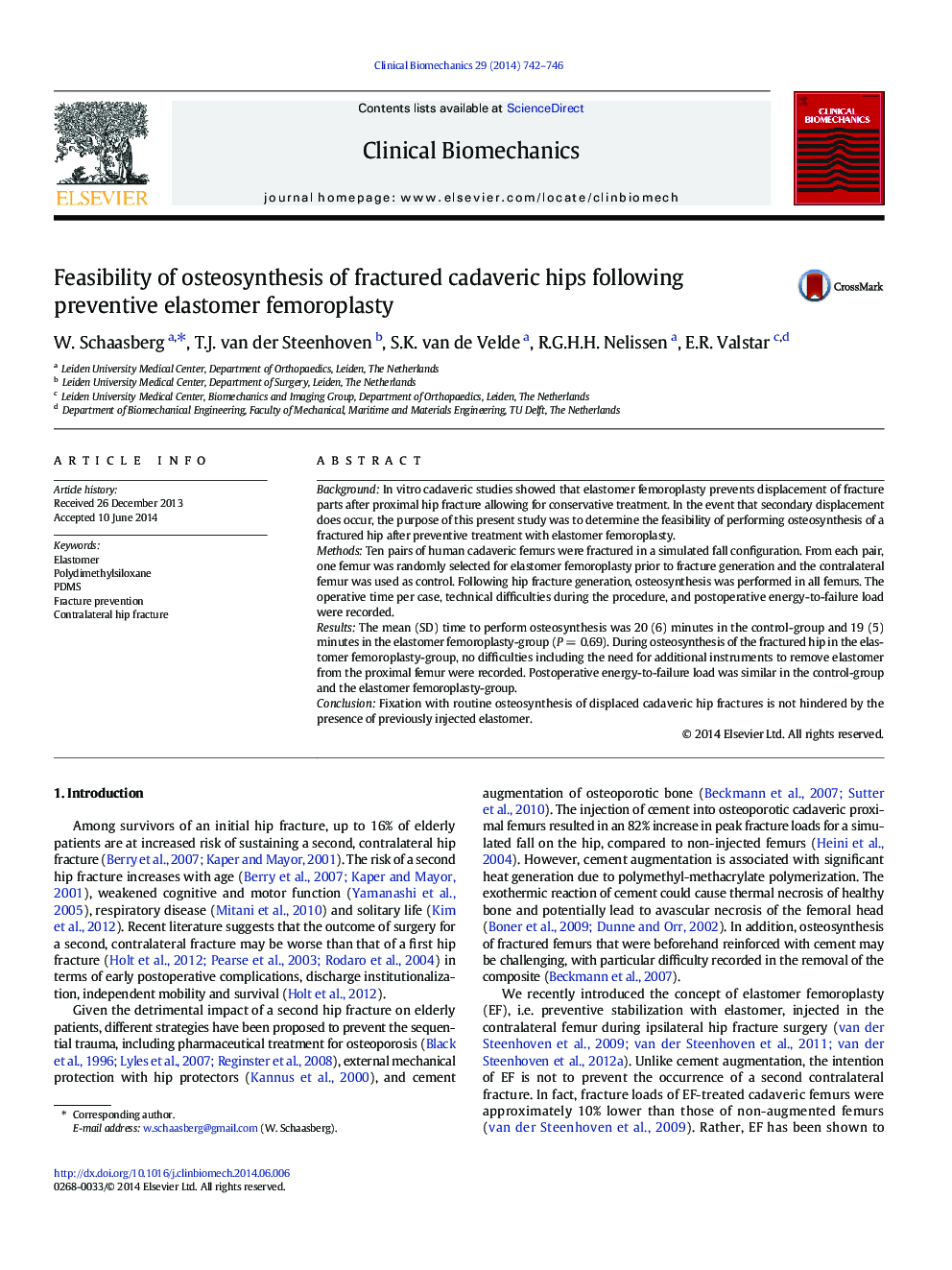| Article ID | Journal | Published Year | Pages | File Type |
|---|---|---|---|---|
| 6204877 | Clinical Biomechanics | 2014 | 5 Pages |
â¢Preventive elastomer femoroplasty prevents displacement of hip fractures.â¢We investigated the feasibility of osteosynthesis of fractured hips following EF.â¢We found no difference in performing standard osteosynthesis after EF.â¢There was no difference in time to perform the osteosynthesis.â¢There was no difference in energy to failure load.
BackgroundIn vitro cadaveric studies showed that elastomer femoroplasty prevents displacement of fracture parts after proximal hip fracture allowing for conservative treatment. In the event that secondary displacement does occur, the purpose of this present study was to determine the feasibility of performing osteosynthesis of a fractured hip after preventive treatment with elastomer femoroplasty.MethodsTen pairs of human cadaveric femurs were fractured in a simulated fall configuration. From each pair, one femur was randomly selected for elastomer femoroplasty prior to fracture generation and the contralateral femur was used as control. Following hip fracture generation, osteosynthesis was performed in all femurs. The operative time per case, technical difficulties during the procedure, and postoperative energy-to-failure load were recorded.ResultsThe mean (SD) time to perform osteosynthesis was 20 (6) minutes in the control-group and 19 (5) minutes in the elastomer femoroplasty-group (PÂ =Â 0.69). During osteosynthesis of the fractured hip in the elastomer femoroplasty-group, no difficulties including the need for additional instruments to remove elastomer from the proximal femur were recorded. Postoperative energy-to-failure load was similar in the control-group and the elastomer femoroplasty-group.ConclusionFixation with routine osteosynthesis of displaced cadaveric hip fractures is not hindered by the presence of previously injected elastomer.
